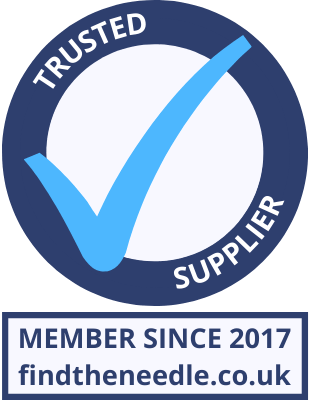 Add My Company
Add My Company
Sign In

We’ve all benefitted from standardization. At the most basic levels, we can use a shared number system in almost every country in the world, we use a shared calendar for business purposes at least, we use a standard system of time zones for business worldwide and the US Dollar is the de-facto currency for international trade in many regions and for key commodities. We buy food using standardized weights and measures and we buy shoes and clothes in standard sizes.
The list of examples is endless – everything from automobiles to zoology benefits from standardization. We’re used to accepting it in manufacturing (how else would mass production exist?) and engineering, for example, and from the early days of computing it was a natural path to follow. Computer coding languages follow conventions and protocols to make things easy to check as well as easier to develop.
You really can have too much of a good thing
Standardization is great. And the modern world without it would be difficult to conceive. ‘Complicated, dangerous and unpredictable’ spring to mind. But standardization has its drawbacks. If everything is the same, there is a risk of everything being boring, of it being increasingly difficult to stand out. So those who can afford it might have clothes made for them, rather than buying ‘off the peg’. People go to huge lengths to make their homes reflect who they are and to make sure they don’t look the same as everyone else’s. Who hasn’t sought that ‘truly unique’ gift to bring back from a holiday destination to show that we’re different?
In a world where standardization determines so much it can be difficult to break the mould. This is true in almost all fields. Look at the way that Realtors all set out to differentiate themselves from the competition when, except for the unusually effective or the appallingly bad, they all do more or less the same thing. And it’s the same too when providing any other service or making goods to sell. Standardization has its very real benefits, but it makes it much harder to stand out from the crowd and grow the business. So how can that be done?
Hard work (and more hard work)
It may seem old fashioned, but a large part of the solution lies in the clear thinking and the effort you put into solving this problem. And thinking your way through it is fundamentally important. Try to avoid relying on ‘gut instinct’ – if Daniel Kahneman is right (Thinking, Fast and Slow, 2011), that is likely to be little more than an accumulations of bias (subconscious as well as conscious) mixed in with pre-conceptions about your pre-chosen outcome, often regardless of the evidence. No, this needs a long calm look at what you are offering and how you can make your service or product be visible and attractive.
Step out from your comfort zone
We all fall victim to self-deceit and it’s easy to assume that because we knew the market last year, or the year before, we know the market today. This might just be true in a few cases, but the chances are your market has changed significantly over the last 12 months. This was probably happening anyway, but because of Covid-19 it’s really difficult to point to a market and say, ‘Yes, that’s exactly how I thought it would be.’
As economies step falteringly out of lock down, market research is essential. You’ll need data. The first place to go is your past and existing customers, plus previously cold leads. Step out of your comfort zone and find out what their markets are like and what they think they need or could sell. If you’ve got a dynamic and responsive team, these contacts alone may well be enough to get you started.
If you can afford to, invest in decent market research. You need lots of information and someone skilled to interpret it, or at least to set out the possible ways to look at what you discover. And while it might be tempting, avoid getting you niece or nephew who’s a whizz with a spreadsheet to do this. Go to people who understand the questions to ask and what the answers imply – go to someone who really understands the way market research works and can use the (standardized!) statistical methodologies to make sense of changing patterns.
Add a pinch of innovation to your product
The aim is to have products which for the customer shout out ‘originality’ but for you take advantage of standardised production or service processes. Never has imagination, good design and determination been so important. A few small changes may be enough: it may be new labelling, a price change jointly with supply chain partners, or a refreshed advertising campaign. On the other hand, you might need to make big changes – to packaging, to marketing strategies and channels, and even introduce innovations when it comes to the design functionality.
Whichever route you find yourself on, your work at this point needs to be second to none. The aim is to identify new products and make them stand out. Make them different. Make them the things that everybody wants, now.
Good design is about making ideas tangible, and your designers will need to be on fire. You’ll need to have products that stand out and shout individuality, faultless function, and ideally both. For physical products, your buyers need to be sourcing the right (good quality) materials at the right prices from reliable suppliers. Get the legal work right. Lodge new patents if you need to. Protect your intellectual property.
And at the same time crank up the marketing to prepare your customers and start pushing to open up new markets for your new product or service. Make sure that what you create is good quality. You don’t want your reputation tarnished and you don’t want time lost to complaints. If there’s a similar alternative, make yours better. Be crystal clear about your USPs. Be ready to be flexible. If someone sees what you’re doing and copies you, respond with an improved product yourself.
Be Consistent, Be Relentless, Be Better
Above all, make the most of the opportunities. Some of your competitors will be struggling or shut. Some will be waiting for the recovery and will miss the bus. But some of your competitors will doing what you’re doing and doing it well – so to stand out from the crowd pay attention to every little detail and do so consistently. The basic ideas are not difficult but it’s easy to slip up and lose focus. The business that does the important things well, consistently, will be the business making a good profit in a year’s time.
Kingly Ltd. is a market leader in high-impact branded promotional gifts including compact textiles (compressed towels and T-shirts) and upcycled socks in compostable bags – all combined with original creative packaging. Requesting a sample is 2 clicks away. Exploreout new range of hygiene products that come in attractive brandable packaging. Ask for our latest catalogue via service@wearekingly.com
For more information on How to stand out from your compatitors in a standardized world? talk to KINGLY LTD
Enquire Now
List your company on FindTheNeedle.

